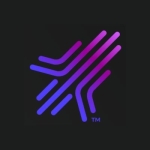If you were expecting me to have a real change of heart since my last review 4 years ago, you are probably going to be disappointed. This is the least favorite option of the 3 products I am reviewing in this roundup. I will do my best to explain why.
1. Cost
The great news is that now with Sharepoint you have some really nice pricing options. One of my original gripes with Sharepoint was that it was extremely costly. You had a lot of upfront costs + per user costs + hardware costs + expensive Desktop software costs (Visual Studio, etc.).
While many of those costs still exist for the server version, Microsoft recently added Sharepoint Online which has a much simpler pricing system. I actually reviewed both the Sharepoint Online $3 user/mo plan and the server edition on Rackspace which offers a free trial. I will detail some of those differences as we review this product.
The enterprise server edition is still pretty pricey even if you use Rackspace. Using Rackspace is a way to cut down on your company’s IT costs since you will be outsourcing some of the difficult IT infrastructure to Rackspace. That being said you would still likely have some of the same licensing costs even if you use Rackspace or another hosting provider.
SP online offers $3/mo per user costs with no minimums and they also have a $7/mo option (with a few more features) as well. Crunching the numbers for a small 30 person company you’re paying $90/mo and for a 100 person company you are paying $300/mo. This to me seems a lot more reasonable as pricing goes compared with Jive.
2. Ability to Customize
This is where your Sharepoint version matters. With the online product you have the ability to change the look and feel of the site and add apps to the site including apps from the app store (which offer free and paid apps).

Customizing the theme
 Adding apps to a site
Adding apps to a site
Furthermore, a big customization aspect is the ability to add multiple site collections and subsites (which has been a strong selling point for years). You can create public sites, private sites and sites that are subsites of others. You can imagine how this is appealing to large businesses with many departments. And remember you can do all of this now online without all of the expensive hardware, IT support, etc. that used to be required to run Sharepoint.
With the server edition you have much more flexibility to customize Sharepoint. Sharepoint runs on ASP.NET. If you have ASP.NET developers on staff, you have the ability to create features using ASP.NET and deploy them to the server. This has also been a big selling point for Sharepoint.
I was very critical of this aspect of Sharepoint in my original blog because as I found then, SP was much more difficult to customized (via development) than what was advertised. Even with several expert ASP.NET develoers and a windows server admin on staff we had difficulty doing simple development tasks. Numerous SP defenders responded to my original post saying these issues have been fixed over time. I no longer have Visual Studio and I no longer work on Sharepoint sites so I can’t comment on these improvements. I can say that for organizations that have ASP.NET developers, the server edition will certainly be an advantage. For businesses that don’t have Microsoft-developers, now they have an online edition only version which will likely be a better fit.
3. Overall features
As I started playing around with Sharepoint 2013 I also read some reviews to compare my experience. A quick Google search provided favorable reviews that are worth mentioning:
After reading these reviews, I discovered what I experienced and what I read were significantly different. It took me a long time to figure out what was going on. And I have built an entire Sharepoint site. I have created and deployed SP features. I have read Sharepoint books and I am familiar with the Sharepoint vernacular. I still had a difficult time figuring out how to navigate Sharepoint.
 Sample site administrative homepage
Sample site administrative homepage
To be fair, with a large platform like Sharepoint there is going to be a learning curve, especially for administrators. TechRadar puts it this way:
It takes time to figure out everything you can do, and to get the most out of it you need to get everyone to put their documents and thoughts and analyses into SharePoint sites.
So that for me is the first issue I have with Sharepoint. It just does not seem user-friendly to me. My feeling is that many of these blog reviews compare Sharepoint with itself, as opposed to comparing Sharepoint with competing products. If you strictly compare Sharepoint with prior versions you could argue that SP has improved in all aspects. But SP is no longer the only enterprise-level offering. In that light, it’s really more of a fair comparison to evaluate SP against other products with similar features.
Here is an example. I see an app for “Custom List”. This is a feature familiar to SP users but maybe not quite as clear to non-SP users. So I add the Custom List app to my site. I am not 100% what it’s for but I take the plunge and add the Custom List.

Screen grab of the “Custom List” content area.
I start adding items only to come to the conclusion, “Now What?”.

After adding a few items
This feels a little bit like Drupal taxonomy but I am not 100% certain. I vaguely remember using it somewhat like taxonomy when I worked on my last SP site, some 4 years ago.
When I click on the options area my hunch is that there are some awesome things I could do if I only knew how. And so maybe a good Sharepoint book would help me out right?

Click on menu options for an item
But then that’s the issue isn’t it? As the TechRadar reviewer mentioned that a social intranet like this is only useful if everyone is interacting with it. And SP in my opinion is just too difficult to entice everyone in an organization to use it.
Learning curve aside, one of the big selling points for Microsoft is it’s integration with other Microsoft products. Now I should mention that Jive (and probably others) also have some Microsoft integration. I did find with the online version of had some Office integration that the server edition did not (maybe because I was using a barebones version perhaps)? I found this to be a pleasant experience.

Adding a SP document
 Adding a Microsoft Word doc
Adding a Microsoft Word doc
Office 365 is Microsoft’s online suite of products meant to compete with the very popular Google Apps suite. At Mediacurrent we use Google Apps and love it! I have looked at Office 365 and my impression is that there’s no compelling reason for companies to pay the added cost unless they have already been in the Microsoft ecosystem / upgrade cycle for many years. That being said, for a full blow-by-blow comparison check out this recent comparison from PCWorld: “Office showdown: Microsoft Office 365 vs. Google Apps.”
Conclusion
My conclusion is that Sharepoint is better in it’s current form but not significantly better than the competition. I would not be able to recommend this product to anyone who is not already entrenched in the Microsoft ecosystem. What I mean is that for companies who use Microsoft products for years, run Windows servers, and who perhaps who have even used past versions of Sharepoint, I would certainly think that those organizations would be more comfortable with this product. I am sure I will get feedback from such people who will tell me that I am overly critical of Sharepoint. I just want to reiterate that companies that have ASP.NET developers and run Windows servers, for that audience Sharepoint is probably your best bet. For other organizations I am pretty sure it wouldn’t be the best fit.
To me the best feature of Sharepoint is the ability to create multiple site collections and multiple subsites, with permission inheritance. And you can have it all plug into Active Directory. This is really how you can harness the power of Sharepoint. I also think that Sharepoint is much more suited for intranet sites and public sites. That being said, there is certainly an advantage to using one system for all.
Disclosure: I am a real user, and this review is based on my own experience and opinions.




 Adding apps to a site
Adding apps to a site Sample site administrative homepage
Sample site administrative homepage



 Adding a Microsoft Word doc
Adding a Microsoft Word doc









